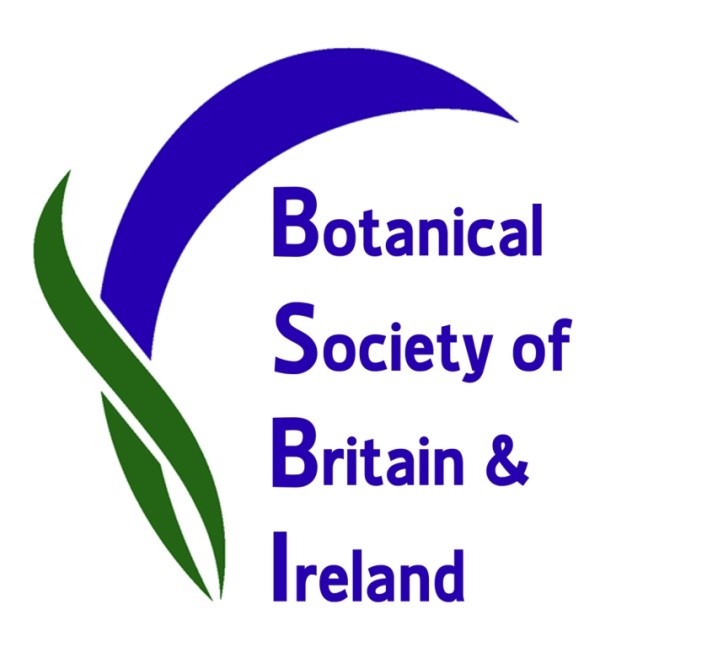Dumfries Botany Group at Dunscore, 18 Apr 2019
There were nine of us who met up for the first field meeting of the season at the church at Dunscore on what was a very warm day for April. The aim was to record in the two monads, one including the village itself and the road down to the Cairn Water at Dalgonar Bridge and the second including most of the Dalgonar Linn. This is a good time of year to explore woodland. Many woodland plants have early seasons to make the most of the light before the tree canopy closes out the sunlight reaching the floor.
The first hour or so was spent reacquainting ourselves with the wild plants that make use of the habitats we have given them in and around our towns and villages, car parks, verges, hedge banks the churchyard and its walls. Some of these are spring annuals, plants that overwinter as a rosette and flower before the warmer weather dries them up. In the car park there was plenty of Common Whitlowgrass Erophila verna with tiny spoon shaped not very hairy leaves and white flowers with bifid petals all less than 10cm tall. On the verge a pre flowering challenge was to id a dark shiny pinnate leaf not yet in flower. The leaf characters helps point you towards Wintercress Barbarea sp. rather than Yellowcress Rorrippa sp. both yellow flowered crucifers. The large size and undivided upper stem leaves suggest Common Wintercress Barbarea vulgaris. On the verges and in the churchyard the Lesser Celandine Ficaria verna was still prominent. This has two subspecies and both were found. One has larger showier petals and good seed F. verna ssp. fertilis and the other has smaller petals, produces few seeds and instead produces bulbils in the leaf axils F .verna ssp. verna. I tend to associate the bulbiferous subspecies with more disturbed ground. The walls of churchyards are always worth looking at. They tend to be old and have a good limey mortar. This is a good habitat for some of our small ferns. You almost always get Maidenhair Spleenwort, Asplenium trochomanes ssp. quadrivalens and Wall-rue, Asplenium ruta-muraria but it was great to see Rustyback Asplenium ceterach as this is much less widely distributed. There was a lot on the north facing wall. It had last been recorded in Dunscore in 1976 but has clearly been happily surviving all that time. A bonus was a nice growth of Shining Cranes’s-bill Geranium lucidum at the base of the wall, a new record for NX88.
We walked slowly down to Dalgonar Bridge where there is a short length of the Cairn Water in the square. We had lunch on the riverbank under the light shade of early leaves. The bridge is at the upper end of the Linn and the vegetation looked like a well established river and woodland community. There was young growth of Sweet Cicely Myrrhis odorata, Marsh Marigold Caltha palustris in flower and the more subtle flowers of Moschatel Adoxa moschatellina poking up through other vegetation.
After lunch we pushed further down the Dalgonar Linn. We had to get back on the road to get past an old mill ruin. As we re-entered the woods we found a nice patch of Sweet violet Viola odorata with white flowers and violet spur another new record for the hectad. These woods had good populations of Wild Garlic Allium ursinum, Wood Anemone Anemone nemorosa and Wild Hyacinth, Hyacinthoides non-scripta. A great find was of three plants of Globeflower Trollius europaeus on the mossy rocks by the river in the Linn, new to NX88. A less great find was in isolated though well grown American Skunk-cabbage Lysichiton americanus beside the river.
At the bottom of the Linn the river bends under an old railway bridge. Our attention was drawn to a very interesting area of rocky pasture with wet areas and dry knolls. This looked largely uncultivated other than grazing, a rare find these days in the lowlands. It had some interesting plants and may merit a further look later in the year. The presence of Burnet-saxifrage Pimpinella saxifrage, Purple Moor-grass Molinia caerulea, Marsh Cinquefoil Comarum palustre and Spring -sedge Carex caryophyllea shows the variety of niches present in a relatively small area.
Chris Miles
BSBI county recorder for Dumfriesshire VC73 – see bsbi.org/dumfriesshire

